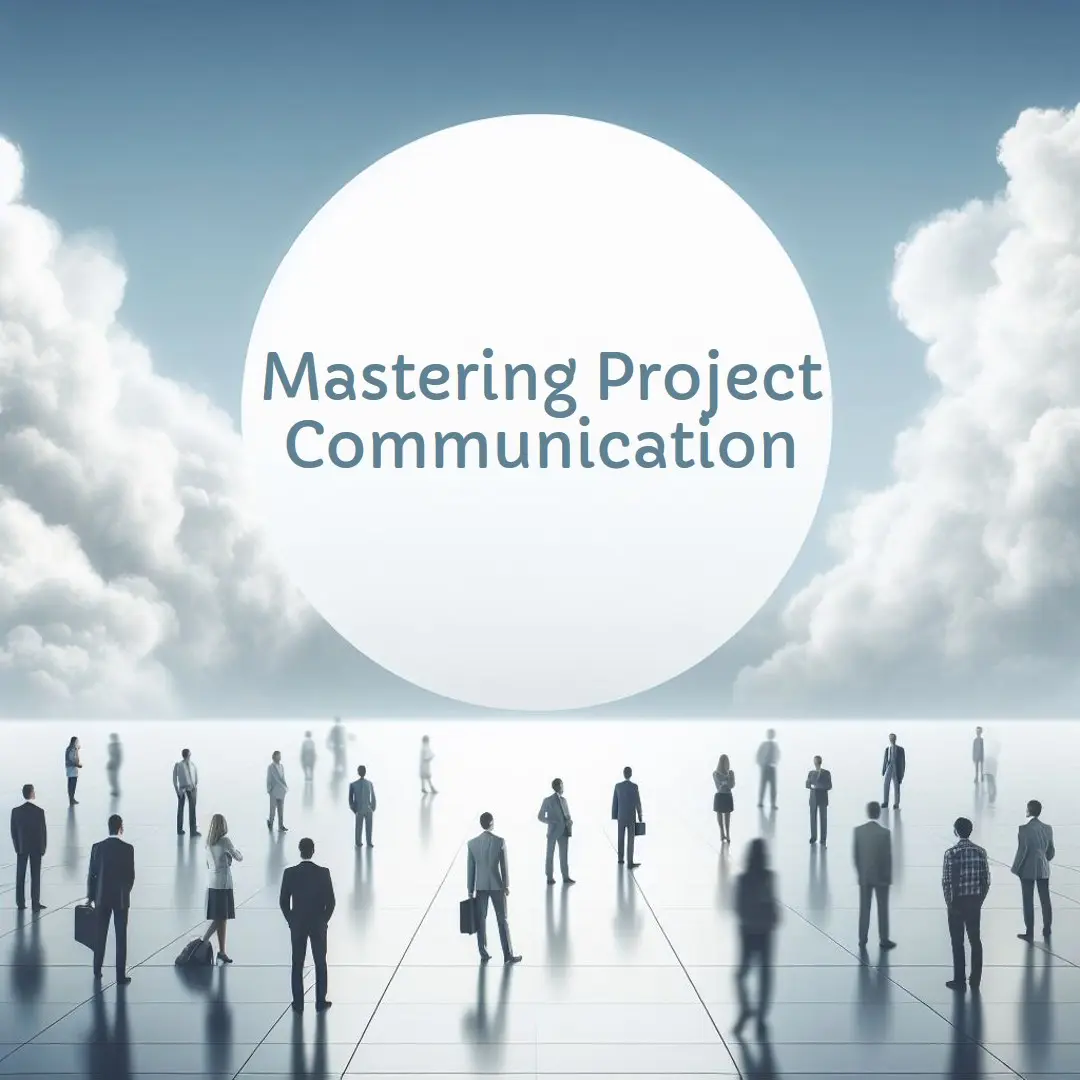Section 1: Introduction
Have you ever found yourself in the middle of a project, only to realize that communication within your team is all over the place? As a project manager, I’ve been there more times than I can count. And let me tell you, poor communication can lead to some serious problems, like missed deadlines, frustrated team members, and even project failure. That’s why I’m excited to share with you the 7 C’s of project communication, a powerful framework that can help you streamline your team’s communication and get everyone on the same page.
So, why are the 7 C’s so crucial for project success? Well, effective communication is at the very heart of project management. It’s the glue that holds everything together, from planning and execution to monitoring and closing. By mastering the 7 C’s, you can ensure that your team’s communication is crystal clear, concise, and actionable, reducing misunderstandings and keeping everyone focused on the end goal.
In this blog post, we’ll dive deep into each of the 7 C’s of project communication and discuss practical tips for applying them to your team’s everyday interactions. I promise that by the end of this post, you’ll have all the tools you need to transform your team’s communication and set your projects up for success. So, let’s get started on our journey to mastering the 7 C’s of project communication!
Section 2: Clear
First up on our journey to mastering the 7 C’s of project communication is the concept of clarity. You know that feeling when you’re in a meeting and someone starts talking in jargon or technical terms that only a few people understand? It’s frustrating, right? I’ve been there too, and I can’t stress enough how important it is for project communication to be clear and easily understood by everyone involved.
When your team’s communication is clear, it reduces the risk of misunderstandings, keeps everyone on the same page, and ensures that tasks and objectives are well-defined. On the other hand, unclear communication can lead to confusion, duplicated efforts, and wasted time. Trust me, no one wants that.
So, how can you ensure that your project communication is always clear? Here are a few tips that have worked wonders for me:
- Know your audience: Always be mindful of who you’re communicating with and tailor your message accordingly. If you’re talking to a non-technical stakeholder, avoid using jargon or acronyms they may not understand. Instead, use simple language that clearly conveys your message.
- Keep it simple: Less is often more when it comes to communication. Be direct and focus on the most important information, without adding unnecessary complexity or details.
- Use visuals: Sometimes, a picture truly is worth a thousand words. When appropriate, use diagrams, charts, or other visual aids to help illustrate your point and make your message more accessible.
- Ask for feedback: Encourage your team members to ask questions and provide feedback on the clarity of your communication. This will not only help you refine your messaging but also create a culture of openness and collaboration.
Remember, the goal of clear communication is to make it as easy as possible for your team to understand the message you’re trying to convey. By following these tips and always prioritizing clarity in your project communication, you’ll be well on your way to creating a more efficient and effective team. And believe me, your team will thank you for it.
Section 3: Concise
Our next stop on the journey to mastering the 7 C’s of project communication is all about being concise. Have you ever received a long, rambling email or sat through a never-ending presentation that left you feeling overwhelmed and confused? I know I have, and it’s not a pleasant experience. In a world where we’re bombarded with information, being concise in our project communication is more important than ever.
When your communication is concise, you can convey your message more efficiently, respect your team’s time, and minimize the risk of information overload. It also helps your team members to quickly grasp the key points and take the necessary actions.
So, how can you make sure your project communication is always concise? Here are a few tried and tested techniques that I’ve found to be incredibly helpful:
- Plan before you communicate: Before you start writing an email or preparing a presentation, take a moment to plan out what you want to say. Identify the main points you want to get across and try to distill them down to their essence. This will help you stay focused and avoid wandering off-topic.
- Use bullet points: Breaking your message down into bullet points can be a great way to keep it concise and easy to digest. This format encourages brevity and helps your team members quickly identify the most important information.
- Edit, edit, edit: Once you’ve written your message or created your presentation, go back and edit it ruthlessly. Remove any unnecessary words, phrases, or details, and make sure every sentence serves a clear purpose.
- Be mindful of your word choice: Choose your words wisely, opting for simpler language whenever possible. Avoid using complex terms or jargon that may be confusing or unclear to your audience.
By keeping your project communication concise, you’ll not only save time and effort for yourself and your team but also create a more productive and focused work environment. And as someone who’s been on both sides of the communication equation, I can tell you that a concise message is always appreciated.
Section 4: Concrete
As we continue our exploration of the 7 C’s of project communication, let’s delve into the importance of being concrete. I’m sure you’ve experienced situations where vague or ambiguous communication left you scratching your head, unsure of what was actually being said or what you needed to do. I know I have, and it can be incredibly frustrating.
Concrete communication is all about providing specific, actionable information that your team members can easily understand and act upon. By being concrete in your communication, you can eliminate guesswork, reduce confusion, and help your team to work more efficiently and effectively.
So, how can you make your project communication more concrete? Here are some strategies that have worked wonders for me and my teams:
- Use specific examples: Whenever possible, support your points with real-life examples or case studies. This not only makes your message more concrete but also helps your team members to better understand and remember the information.
- Provide clear instructions: When assigning tasks or outlining expectations, be specific about what needs to be done, when it should be completed, and who is responsible for it. Clearly define the desired outcome to avoid any ambiguity.
- Avoid vague language: Steer clear of words and phrases that leave room for interpretation, such as “soon,” “as soon as possible,” or “a lot.” Instead, opt for more specific terms, like “by the end of the day” or “within two weeks.”
- Use data and facts: Support your statements with data, statistics, or other objective information. This not only lends credibility to your message but also provides your team with a solid foundation to work from.
By making a conscious effort to be more concrete in your project communication, you can ensure that your team members have the information they need to complete their tasks effectively and stay aligned with the project goals. Speaking from personal experience, nothing feels better than knowing that everyone is on the same page, working together toward a shared vision.
Section 5: Correct
As we progress through the 7 C’s of project communication, let’s talk about the importance of being correct. Have you ever been given incorrect information, only to find out later that you’ve been working on the wrong thing or headed in the wrong direction? I’ve been there, and it’s not only frustrating but also time-consuming and costly for the entire team.
Ensuring that your project communication is accurate is crucial for maintaining trust within your team, making informed decisions, and avoiding costly mistakes. By sharing correct information, you can foster a culture of reliability and accountability, which is essential for the success of any project.
So, how can you ensure that your project communication is always correct? Here are some tips that have served me well in my own project management endeavors:
- Verify your sources: Before sharing any information, make sure it comes from a reliable source and has been thoroughly vetted. This may involve double-checking facts, consulting with experts, or cross-referencing data.
- Be mindful of assumptions: It’s easy to jump to conclusions or make assumptions based on incomplete information. Instead, make a conscious effort to verify the facts and gather all relevant information before drawing any conclusions.
- Admit when you’re unsure: If you’re uncertain about something or need more information, be honest about it. It’s better to admit that you don’t have all the answers than to share incorrect information and risk causing confusion or misdirection.
- Encourage open communication: Foster a culture within your team where everyone feels comfortable asking questions, challenging assumptions, and discussing potential errors. This can help to ensure that any inaccuracies are quickly identified and addressed.
By prioritizing correct communication within your project team, you’ll not only minimize the risk of costly mistakes but also build a strong foundation of trust and collaboration. And trust me, there’s nothing more satisfying than knowing your team can rely on you for accurate, dependable information, no matter the circumstances.
Section 6: Coherent
As we move forward in our exploration of the 7 C’s of project communication, let’s discuss the importance of coherence. Have you ever tried to follow a conversation or presentation where the speaker seemed to jump from one topic to another without any clear connection? If you’re like me, you’ve probably found it difficult to follow along and grasp the main message. That’s where coherence comes into play.
Coherent communication is all about organizing your information in a logical, consistent, and easy-to-follow manner. By maintaining coherence in your project communication, you can help your team members understand the bigger picture and see how all the pieces fit together.
So, how can you ensure that your project communication is always coherent? Here are some techniques that have helped me and my teams stay on track and avoid confusion:
- Structure your message: Start by outlining the main points you want to convey and then organize them in a logical sequence. This will help you create a clear narrative that your team can easily follow.
- Use clear transitions: When moving from one point to another, use clear transition phrases or signposts to guide your team members through your message. This will make it easier for them to follow your train of thought and understand the relationships between different ideas.
- Stay focused: Resist the temptation to go off on tangents or include unrelated information. Stick to the main topic and keep your message focused and relevant.
- Revise and refine: Once you’ve drafted your message or presentation, take the time to review it for coherence. Ensure that your points are well-organized, clearly connected, and easy to follow.
By making a conscious effort to maintain coherence in your project communication, you can help your team members grasp complex information more easily and stay aligned with the project’s goals and objectives. In my experience, a coherent message is not only more effective but also more enjoyable to receive, making for a happier and more productive team overall.
Section 7: Complete
We’re getting closer to mastering the 7 C’s of project communication! Our next stop is all about providing complete information. Have you ever been given only part of the information you needed to complete a task, only to realize later that crucial details were missing? I’ve been there, and it’s an incredibly frustrating experience that can lead to wasted time, unnecessary back-and-forth, and even project delays.
Complete communication means providing all the necessary information, including relevant details, background, and context, for your team members to fully understand and act upon your message. By ensuring that your project communication is complete, you can help your team work more efficiently, avoid misunderstandings, and maintain a smooth workflow.
So, how can you ensure that your project communication is always complete? Here are some tips that have helped me keep my teams informed and on track:
- Anticipate questions: Before sharing any information, try to anticipate the questions your team members might have and address them proactively. This can save time and minimize the need for follow-up communication.
- Provide context: When sharing information, make sure to include any relevant background or context that will help your team members better understand the bigger picture and see how the information fits into the overall project.
- Be thorough: Don’t leave out important details, even if they seem obvious to you. Remember that your team members may not have the same knowledge or perspective as you do, so it’s essential to be thorough in your communication.
- Encourage feedback: Create an open environment where your team members feel comfortable asking for clarification or additional information. This not only helps to ensure that your communication is complete but also fosters a culture of collaboration and mutual support.
By making a conscious effort to provide complete information in your project communication, you can help your team avoid unnecessary confusion and work more effectively toward your shared goals. Speaking from experience, there’s nothing more satisfying than knowing that your team has all the information they need to excel and bring a project to a successful conclusion.
Section 8: Courteous
As we wrap up our exploration of the 7 C’s of project communication, let’s take a moment to discuss the importance of being courteous. You might be wondering, “What does courtesy have to do with effective communication?” Well, in my experience, it has a lot to do with it. When team members communicate in a respectful and polite manner, it fosters a positive work environment, encourages open dialogue, and ultimately, leads to more effective collaboration.
The role of courtesy in effective project communication:
Showing courtesy in your communication not only demonstrates professionalism but also helps to build trust and rapport among team members. When everyone feels respected and valued, they are more likely to share their ideas, voice concerns, and actively contribute to the project’s success.
Strategies for fostering a respectful and polite communication environment:
- Show appreciation: Acknowledge the contributions and efforts of your team members by expressing gratitude and appreciation. A simple “thank you” or “great job” can go a long way in creating a positive atmosphere.
- Listen actively: Show respect for your team members by truly listening to their ideas, concerns, and feedback. Active listening involves giving your full attention, asking clarifying questions, and offering empathy and understanding.
- Be mindful of tone: In written and verbal communication, be aware of the tone you’re using. Avoid being aggressive or dismissive, and instead, strive for a friendly, approachable, and respectful tone.
- Use inclusive language: Be mindful of using language that is inclusive and respectful of everyone’s background, culture, and perspectives. Avoid using slang, jargon, or colloquialisms that may not be understood or appreciated by all team members.
- Encourage open communication: Foster a communication environment where everyone feels comfortable expressing their thoughts and opinions without fear of judgment or retribution. Encourage constructive feedback and respectful disagreement to promote growth and learning within the team.
By incorporating courtesy into your project communication, you’ll create a more positive, collaborative, and productive work environment. In my experience, a team that communicates with courtesy and respect is a team that achieves its goals and enjoys the journey along the way.
Section 9: Conclusion and Next Steps
Congratulations! You’ve made it through our journey exploring the 7 C’s of project communication. By now, you should have a solid understanding of how to make your communication clear, concise, concrete, correct, coherent, and complete. Implementing these principles in your day-to-day interactions with your team can have a profound impact on your project’s success and overall team morale.
Find out more about Shaun Stoltz https://www.shaunstoltz.com/about/ This post was written by an AI and reviewed/edited by a human.



